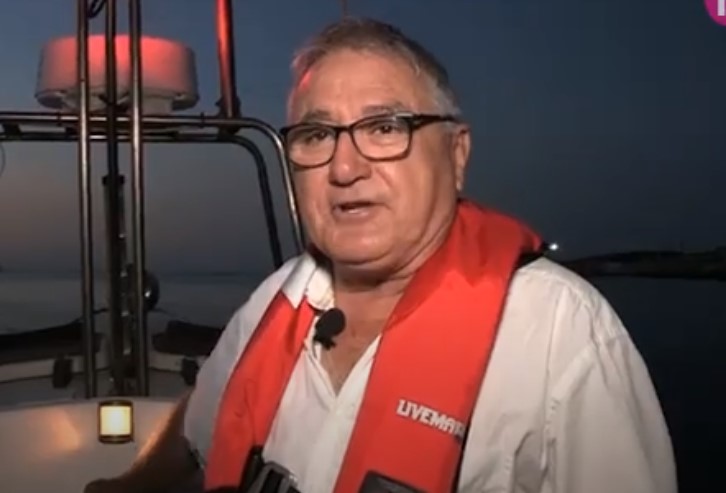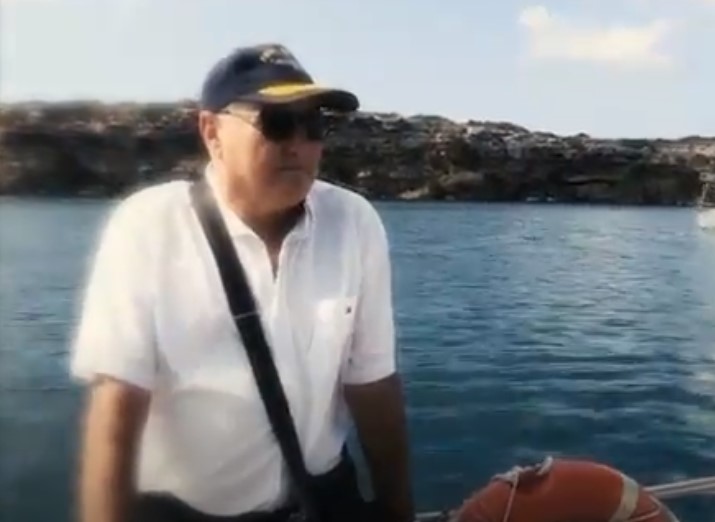
Fermín Aramburu: “We pilots have the manoeuvres in our veins”
Until this week, Fermín Aramburu Sainz has been the pilot of the port of Maó. A passionate job that he has been doing for almost 21 years.
Maó
04/03/2021- Transport and infrastructure
How does a person from Bilbao end up in Maó?
In Bilbao, there was a lot of competition for pilot jobs and I didn’t see a lot of opportunities. On the other hand, I had sailed for many years with Iscomar and the Balearic ports were familiar to me. So I sat the exam in Madrid in June 2000 and I have been in Maó ever since. I’m very content with the work I have done.
What training does a pilot have to do?
We pilots are Merchant Navy captains; we have also sat some exams, including a public entrance exam with different technical and legal topics. When you pass, you become an apprentice for 4 or 5 months, learning manoeuvres under the supervision of a pilot. After obtaining a certificate, you are officially appointed pilot and play an active role in the community. But training never ceases: Every 5 years we have to pass a tough exam to be able to remain in the job.
What is a pilot’s mission?
Our mission is to go on board the vessel to advise the captain on how to manoeuvre it until it reaches the dock. It is important to emphasize that we pilots do not take command of the ship at any time; it is the captain who does so and relies on our advice. The same thing occurs for outbound pilotage: You board and give him advice on courses, speeds, possible tides and currents (although in the Mediterranean there are none). When we have done our job, we greet the crew and disembark. Another less known mission is inland pilotage, when a ship is moved from one dock to another due to operational requirements.
The captain’s full trust is therefore very important.
That’s what it’s like. Empathy, this word that is so fashionable these days, is essential for the technicalities of the job to be as positive as possible.
You must have heard a lot of funny stories over more than 20 years.
Yes, but what is more important are the compliments made by all the cruise passengers on their way to the port of Maó. Every one of them was amazed by the unique physical structure of this port.
It was a key factor in attracting cruise ships to Maó.
I would say that it has been more of a team effort, by the Port Authority, shipping agents, even the administrations, and us. In any case, Maó has a handicap, which is its relatively narrow structure, preventing it from accommodating cruise ships more than 275 m long. And the truth is that shipping companies are increasingly opting for larger ships, which are much more profitable.
Do you remember your first manoeuvre in the port of Maó?
No, not really. I had been there many times as captain and I worked alongside the pilot a lot, so I knew him very well. I don't know if it was a cruise ship or a ferry. What I do remember is the last one, a few days ago, the Volcán de Tinamar operated by Trasmediterránea.
Have you experienced any complicated situation?
We are always worried about everything going well, but fortunately we have been able to solve all problems, despite the limitations of a port like this one, with very strong winds.
Has the work changed over the decades?
It’s true that the ships are more high tech, and we have had to improve our knowledge to keep up. But the work itself and the manoeuvring are the same. It's in our veins.
Your hobby has always been to get to know Menorca on foot.
To stay in shape it's very good for me, and it's also very instructive and beautiful. The Camí de Cavalls is a real marvel, and other inland trails are equally interesting.
What do you plan to do from now on?
I'm going to do a lot of mountaineering in the Basque Country, and also hiking in Menorca.








